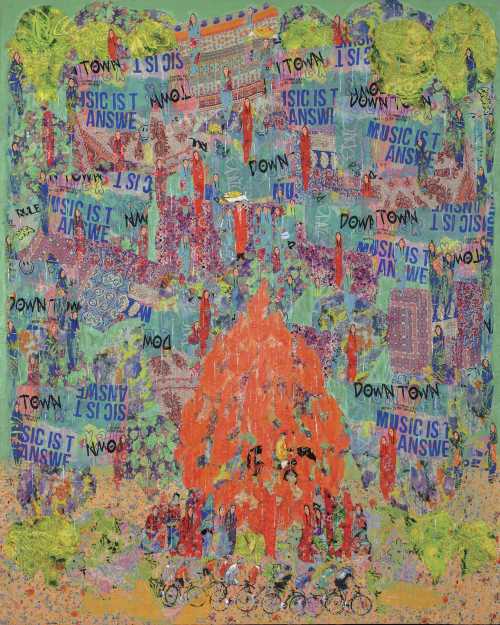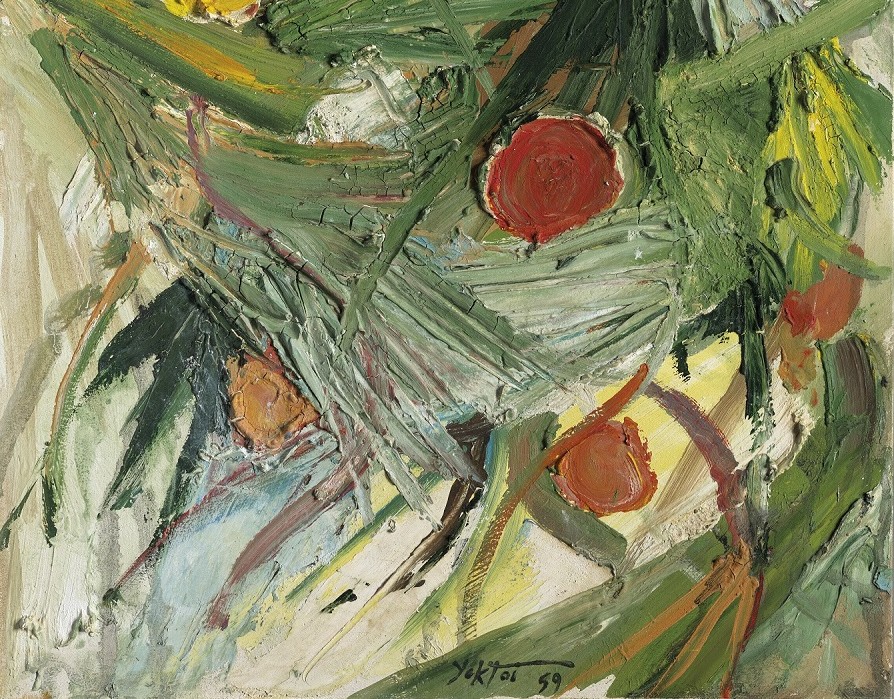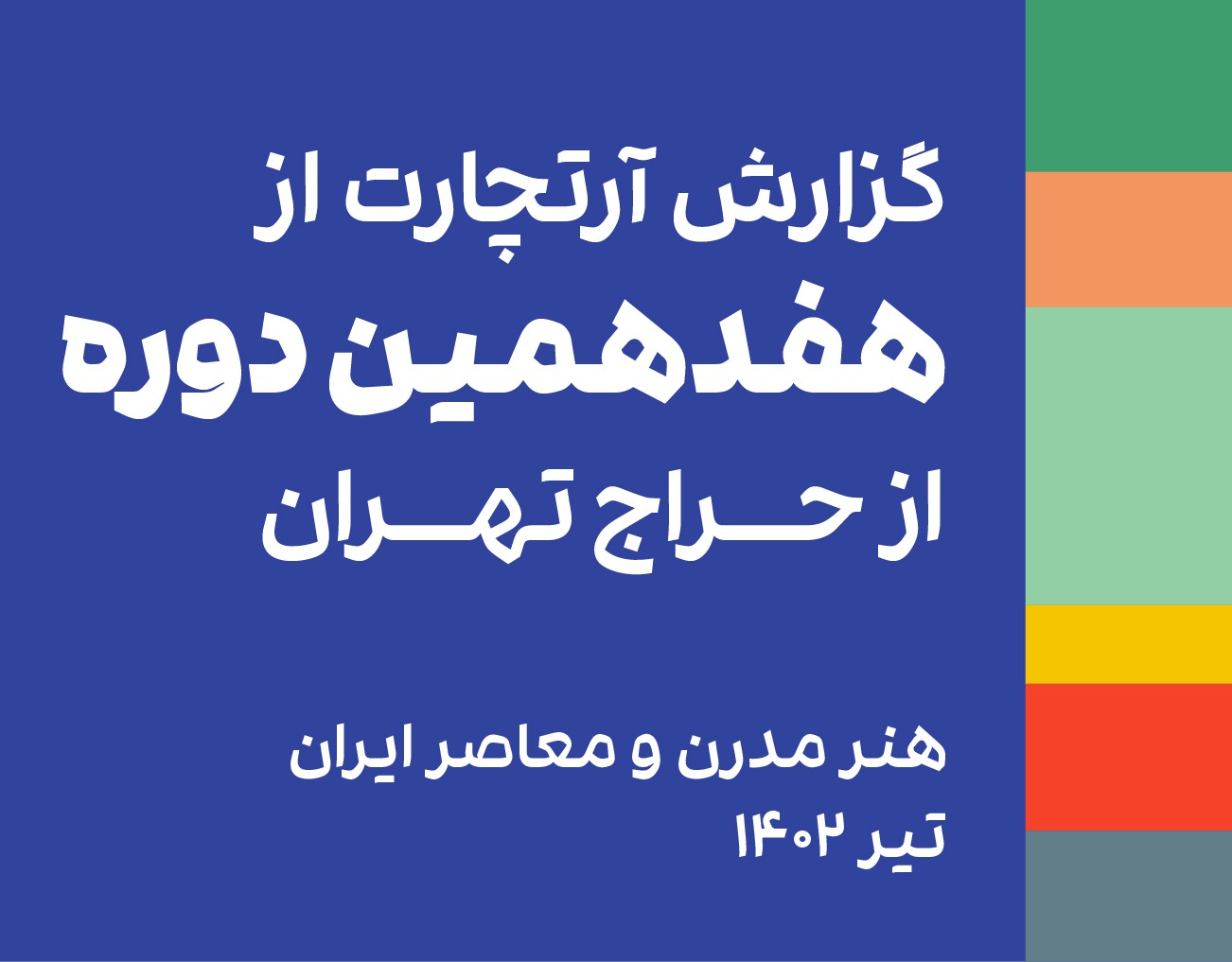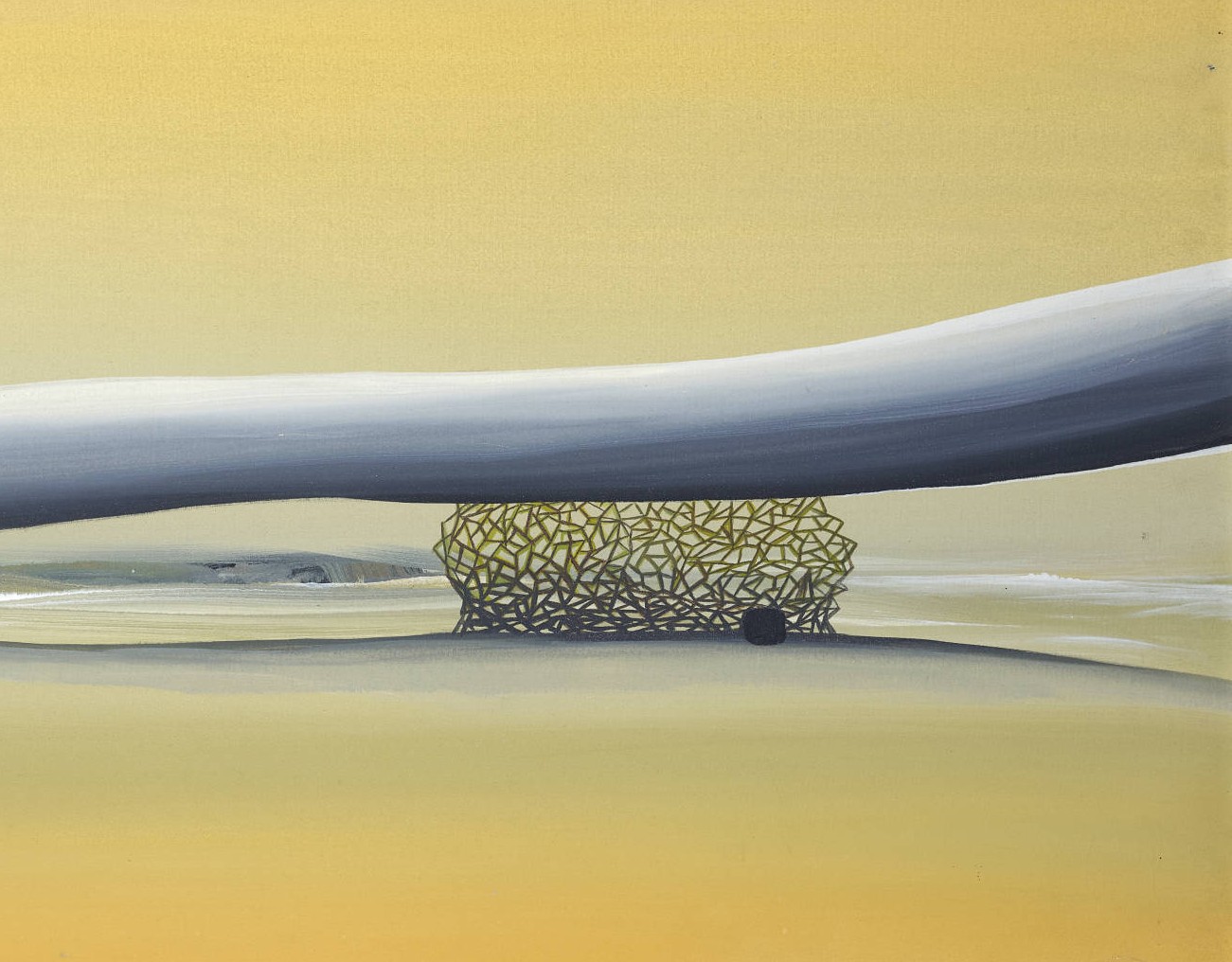About Aneh Mohammad Tatari
Aneh mohammad Tatari, a Turkmen painter, was born in Gonbad-e Kavus, Iran. His artworks deeply resonate with the traditional Turkmen culture and art, characterized by their originality and rich colors.
In 1987, he enrolled in the Faculty of Art and Architecture at Islamic Azad University. After completing his bachelor's degree, he pursued postgraduate studies at the same university. Tatari held his first solo exhibition in 1995 at Tehran's Sabz Gallery, coinciding with his graduation. His international debut occurred four years later at London's Leighton House museum. Since then, his prolific works have been showcased in numerous solo exhibitions across Iran, France, UAE, and other countries. Additionally, his paintings are housed in esteemed international art centers such as Tehran Museum of Contemporary Art, London British Museum, Jordan Library Museum, and Tehran Art Academy Museum. Alongside his artistic endeavors, Tatari is actively involved in teaching at the Faculty of Fine Arts.
In 2004, Tatari was recognized as the featured artist in the second Islamic World Painting Biennial. He repeated this achievement in the fourth international painting biennial of the Islamic world. Throughout different periods, Tatari has employed mixed materials and the batik technique to create varied textures in his paintings. His artistic style has evolved from figurative to colorful abstraction, often characterized by rhythmic repetition of lines and motifs reminiscent of hand-woven fabrics. His art draws inspiration from the rich artistic tradition of his hometown, focusing on indigenous Turkmen elements such as horses, carpets, and Turkmen women's attire. Utilizing authentic colors found in local clothing and rugs, Tatari arranges figures and elements in a flat composition on the canvas, avoiding depth to evoke the motifs seen in Turkmen carpets and rugs.
His artworks blend narrative and imaginary tones inspired by the region's textile motifs and the Turkmen painting tradition, particularly from the Aq-Qoyunlu period, known for its poetic and imaginative qualities. This synthesis of folk art and modern sensibility defines Tatari's distinctive style as a painter.
In 1987, he enrolled in the Faculty of Art and Architecture at Islamic Azad University. After completing his bachelor's degree, he pursued postgraduate studies at the same university. Tatari held his first solo exhibition in 1995 at Tehran's Sabz Gallery, coinciding with his graduation. His international debut occurred four years later at London's Leighton House museum. Since then, his prolific works have been showcased in numerous solo exhibitions across Iran, France, UAE, and other countries. Additionally, his paintings are housed in esteemed international art centers such as Tehran Museum of Contemporary Art, London British Museum, Jordan Library Museum, and Tehran Art Academy Museum. Alongside his artistic endeavors, Tatari is actively involved in teaching at the Faculty of Fine Arts.
In 2004, Tatari was recognized as the featured artist in the second Islamic World Painting Biennial. He repeated this achievement in the fourth international painting biennial of the Islamic world. Throughout different periods, Tatari has employed mixed materials and the batik technique to create varied textures in his paintings. His artistic style has evolved from figurative to colorful abstraction, often characterized by rhythmic repetition of lines and motifs reminiscent of hand-woven fabrics. His art draws inspiration from the rich artistic tradition of his hometown, focusing on indigenous Turkmen elements such as horses, carpets, and Turkmen women's attire. Utilizing authentic colors found in local clothing and rugs, Tatari arranges figures and elements in a flat composition on the canvas, avoiding depth to evoke the motifs seen in Turkmen carpets and rugs.
His artworks blend narrative and imaginary tones inspired by the region's textile motifs and the Turkmen painting tradition, particularly from the Aq-Qoyunlu period, known for its poetic and imaginative qualities. This synthesis of folk art and modern sensibility defines Tatari's distinctive style as a painter.
The Most Expensive Artwork
At Auctions
First Attendance
24 November 2008
# Attendance
16
# Artworks
16
Average Realized Price
7,010 USD
Average Min Estimate
5,810 USD
Average Max Estimate
8,312 USD
Sell-through Rate
71.429%
Average Growth of Artwork Worth
1.394%
Timeline
CHARSOO- Part 2 exhibition
3 October
Modern and Contemporary Art auction
20 June
The 23rd Tehran - Modern and Contemporary Iranian Art auction
22 May
In Prison, Slave exhibition
1 November
Resize exhibition
16 August
Darrous, 34 exhibition
2 August
The 20th Tehran- Modern and Contemporary Iranian Art auction
5 July
For Nowrouz exhibition
15 March
Art Advisory exhibition
8 March
Middle-East Modern & Contemporary Art auction
30 November
Antifragile Human exhibition
4 August
The 17th Tehran Modern and Contemporary Iranian Art auction
18 July
From the Ghahve-khaneh to Sagha-khane and Selected Modern Artists of Iran exhibition
14 July
Art Moderne and Contemporain auction
24 May
Woman exhibition
13 December
Contemporary Selection exhibition
8 December
Tehran- 16th- Iranian contemporary art auction
1 July
The First Fertile Element exhibition
18 February
Group Painting Show Negar exhibition
28 January
Annual Amordad 1400 exhibition
10 September
The 14th Tehran- Contemporary Iranian Art auction
12 August
Humans 2 exhibition
11 December
Solo Exhibition Ane Mohammad Tatari exhibition
28 November
Modern and Contemporary Art auction
9 July
DISCOVERIES auction
17 June
Show and Sell of Works for the Benefit of Corona Patients exhibition
24 April
Shabtab 7 exhibition
14 February
White Black Gray exhibition
13 December
Post-War and Contemporary Art auction
29 May
Painting Exhibition Ane Mohammad Tatari exhibition
7 December
Summer Sale of Artibition exhibition
7 September
The Fourth Annual Auction of Behnam Daheshpour Gallery exhibition
28 June
ُSolo Exhibition Ane Mohammad Tatari exhibition
9 March
هشتمین دوره حراج تهران auction
12 January
Opening exhibition
5 February
چهارمین دوره حراج تهران auction
29 May
The Greater Middle East Unveiled exhibition
22 April
1Ere Vente a Dubai International Modern And Contemporary Art auction
22 October
Art Moderne et Contemporain Iranien et Arabe auction
24 October
Modern & Contemporary Arab, Iranian, Indian & Pakistani Art auction
24 November
Articles
A Review on Christie's and Milon's Middle Eastern Modern and Contemporary Art Auctions, Fall of 2023 3 December 2023
The Middle Eastern art auctions of Christie's and Milon were held on November 9 and November 30, 2023, respectively, which also included several Iranian artists. There were 9 Iranian artists with 11 works in the Christie's and 10 Iranian artists with 13 works in the Milon, which in the following, you will read a report of their performance in these two auction houses.
۱7th Tehran Auction Sales Report 26 July 2023
The 17th Tehran auction: modern and contemporary, was held on Friday July 21st, 2023 at Parsian Azadi Hotel. This auction achieved a total sale of 214 billion tomans equivalent to 4.3 million dollars, which was a growth of 77.8% compared to the previous period. Artchart has observed the 17th Tehran auction in the upcoming report.
From the Sepehri's trees to the painting's of Pooya Aryanpour; An overview of the Modern and Contemporary Middle Eastern auctions at Bonhames and Millon 29 May 2023
The modern and contemporary art auction was held on May 24, 2023 in Bonames and Millon & Associes auction houses. Iranian artists such as Sohrab Sepehri, Manouchehr Yektaei, Parviz Tanavoli and Marco Grigorian to younger ones such as Pooya Aryanpour were participated in these auctions and some of them were among the most expensive one's that were sold. This report is an overview...



